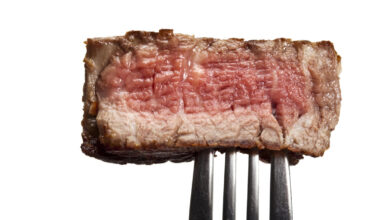fitness: High plank with knee to elbow: strengthens shoulders and glutes (in addition to the core)

The plank is a popular exercise. In addition to being a great overall abdominal strengthener, it also teaches you how to strengthen your core and stabilize your lumbar spine. However, as effective as it is, it also comes across as one of those exercises that can soon become too easy to benefit. Add the variation of
knee to elbow high plank and you will exploit the work of your core while strengthening your shoulders and glutes more.
Typically, once you can plank for a minute or two, you don’t do much for the rest of the day.
developing your core strength, and doing planks for more minutes is not an efficient use of your training time. You may be tempted to ditch your training schedule, but there are ways to make it effective again. For example, adding
the knee-to-elbow high plank exercise.
muscles worked
The knee-to-elbow plank exercise
works all core muscles. Core is the global term to refer to the muscles of the midsection. The main muscles that are worked during this exercise are the rectus abdominis, the transversus abdominis, and the erector spinae.
In addition to these core muscles, the knee-to-elbow plank also
involves various muscles of the upper and lower body. They work to keep you in the raised or high plank position. This means that the knee-to-elbow plank is pretty much a full-body exercise. These minor muscles include the pectoralis major, deltoids, triceps, serratus anterior, and quadriceps.
How to do the knee-to-shoulder high plank
Come into a push-up position with your arms and legs straight. Your knees, hips, and shoulders should form one line. Look directly at the floor, pull your shoulders down and back, and strengthen your core. Tighten the quadriceps and glutes. Bend one leg and lift the knee to the outside of the elbow and lightly touch it. Do not lean to the side or rotate your hips or shoulders.
Extend your leg and return to the starting position. Repeat the movement on the opposite side. Continue alternating legs for the prescribed duration or desired number of repetitions. And remember something very important: your
movements should be slow and smooth at all times.
Advantages and disadvantages of this exercise
This exercise is a more challenging way to do planks. If you can hold a normal plank for more than a couple of minutes, you may be wasting a lot of training time on a meaningless exercise. The
knee to elbow planks they’re a more demanding exercise and a great way to build core strength without spending more time doing planks. Thus, the obliques have to work much harder to stabilize the spine. As such, it’s a much more comprehensive core exercise.
While regular planks are done to time, which means you have to watch your watch when you’re doing them, you can do knee-to-elbow high planks on the rep system, which can be more practical because you don’t have to carry the minute hand count.
Also, you will require more upper body participation. Standing tall with your arms straight during the knee-to-elbow plank exercise gives your upper body a small but worthwhile workout. You can feel this exercise in your triceps, chest, and shoulders, as well as your core. Additionally, it teaches you how to stabilize your spine while moving your legs.
While knee-to-elbow planks are a truly beneficial exercise, there are also some drawbacks to consider. If you don’t have strong arms, your triceps may tire before your abs. A great way to avoid this problem is to do knee-to-elbow planks with your forearms resting on a bench.
And while the plates knee to elbow
they are more challenging than normal planks, are still a relatively simple exercise. After a few months of doing them regularly, you may find that they are no longer demanding enough to get much benefit. Of course, before you will have taken a lot of extras.
Phrase of the day:
“The civilization and culture of the people depend on the education of women” – Carmen de Burgos, writer




